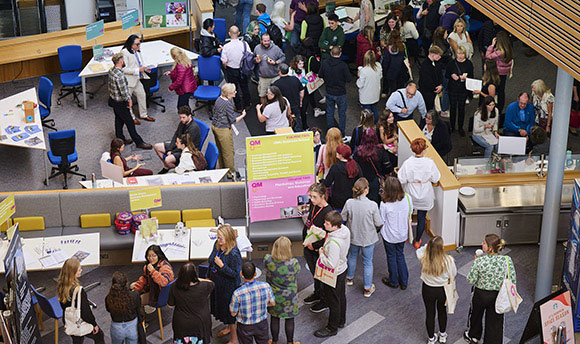School of Health Science MSc DIAGNOSTIC RADIOGRAPHY (Pre-registration)
School of Health Science MSc DIAGNOSTIC RADIOGRAPHY (Pre-registration)
MANAGEMENT OF CLINICAL EDUCATION - HANDBOOK
CLINICAL EDUCATION FOR STUDENTS OF DIAGNOSTIC RADIOGRAPHY
INTRODUCTION
Clinical education placements have a theoretical as well as a practical focus. They provide clear opportunities for students to develop, evaluate, organise and build upon academic learning in a progressive fashion. They enable integration of theory with practice and the safe, effective assimilation of the student into the multidisciplinary health care team.
Clinical and academic blocks are integrated programme elements and should not be viewed as standing alone. Lecturers, Clinical Tutors, Student Liaison Officers, Assessors, Supervisors and all members of the multidisciplinary department teams facilitate continuous linking of theory with practice and provide sound student support. Clinical education for students of diagnostic radiography is delivered from imaging departments in Ayr Hospital,Ayr; Crosshouse Hospital, Kilmarnock; Borders General Hospital, Melrose; Forth Valley Royal, Larbert; Leith Community Treatment Centre; Queen Margaret Hospital, Dunfermline; Roodlands Hospital, Haddington; Royal Infirmary of Edinburgh; Royal Hospital for Sick Children, Edinburgh; St John’s Hospital, Livingston; Stirling Royal Infirmary; Victoria Hospital, Kirkcaldy; Western General Hospital, Edinburgh; Perth Royal Infirmary, Perth and Ninewells Hospital, Dundee. Information regarding staffing and available modalities may be found in the Clinical Placement Handbook.
These organisations provide guided experiential learning through supervised direct patient contact and allow opportunities to develop personal confidence and professional competence. They facilitate the acquisition of clinical judgment skills and the expertise required to become a competent practitioner and effective member of the multidisciplinary health care team.
The clinical education programme includes elements of clinical supervision, clinical workshops, tutorials and clinical assessment and, with emphases on communication and reflection, enables students to acquire the clinical competencies required for registration by the Health Professions Council. Students will also acquire the investigative and analytical skills necessary to enhance the knowledge base of the profession.
Quality Assurance in Clinical Education
Clinical Placements
To ensure the quality and effectiveness of practice placements all new and current placements are required to be approved. The module coordinator or a member of the Diagnostic Radiography team will complete a clinical monitoring report, in conjunction with a named representative from each clinical placement (Appendix A). Placements will be monitored on an annual basis, unless there is a major change within the placement provision, or there is cause for concern.
The following individuals have key roles and defined responsibilities with regard to implementing, coordinating and monitoring clinical education programmes.
Module Coordinator
The module coordinator has responsibility for placing students appropriately to ensure achievement of learning outcomes, organising workshops for students, supervisors and assessors as well as coordinating, implementing and supervising the assessment systems. A key aspect of the role of this individual is effective collaboration with managers and clinicians to ensure that common aims and outcomes are established and achieved. Close liaison with clinical tutors / liaison officers is essential to plan and monitor clinical education appropriately. The individual must interact effectively with the students to encourage development of skills in self-appraisal and reflective practice.
Lecturers / Clinical Tutors / Student Liaison Officers
In addition to providing pastoral care and support, lecturers / clinical tutors / student liaison officers have responsibility for management and education of students on clinical placement and must adopt a key role in collaborating with practitioners to ensure equity of student experience and learning opportunity. They will contribute to the continuous evaluation and development of clinical education and will establish effective relationships with members of the multi-professional team.
Clinical Supervisors
Radiographers are responsible for the teaching and effective supervision of the student on a daily basis as well as monitoring their performance and progress. They have a key role within the continuous assessment scheme, being responsible for the daily appraisal of performance and the provision of continuous feedback to students. All clinical supervisors should undergo training with periodic updates.
Clinical Assessors
Radiographers, having undergone appropriate training, who are responsible for planning, implementing and conducting staged assessments in partnership with the module coordinator, lecturers and clinical tutors.
Notification of Concern
Any supervisor or assessor who has concerns about student performance levels in any of the domains of clinical practice has a clear responsibility to notify the module coordinator. A reporting proforma is available for staff completion (Appendix B). After completion, the individual will notify the module coordinator who will arrange a meeting to discuss their concerns and explore possible actions
Academic Staff Areas of Clinical Liaison
Catherine McClintick; Module Coordinator: All Areas
Alanah Kirby; Senior Lecturer: Ayrshire and Tayside
Alison Scott; Lecturer: Lothian
Dawn Walker; Lecturer: Forth Valley and Fife
Simon Holmes; Lecturer Borders
Contacting the University
Details of the clinical programme including practice educator training, QMU staff contact details, QMU Practice Placement Handbook, clinical documentation and communication forms are located on the QMU Practice Educator Website
When an incident occurs outside of normal working hours, and there is an urgent requirement to contact the University, please telephone (0131) 474 0000. When prompted, ask for reception.



